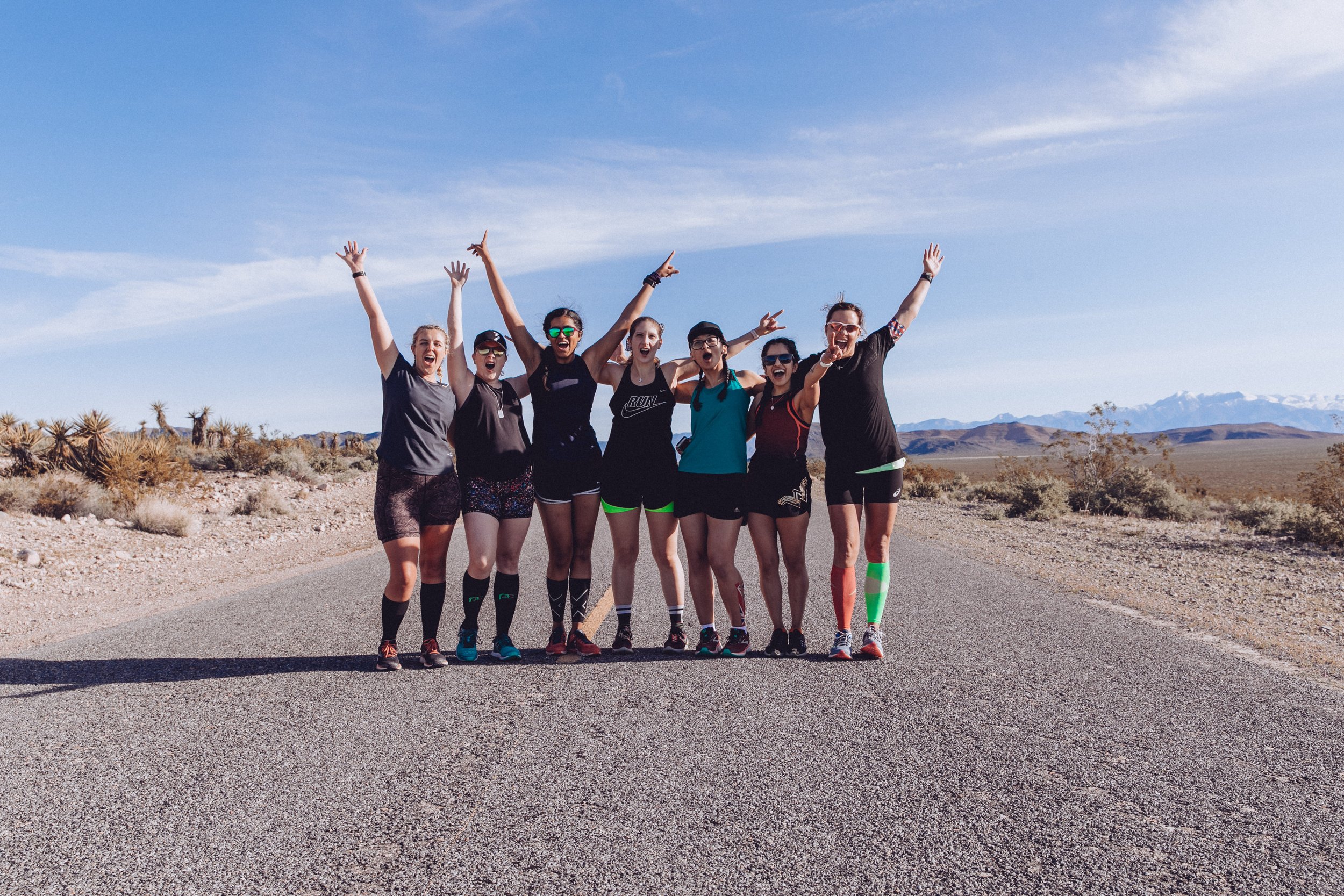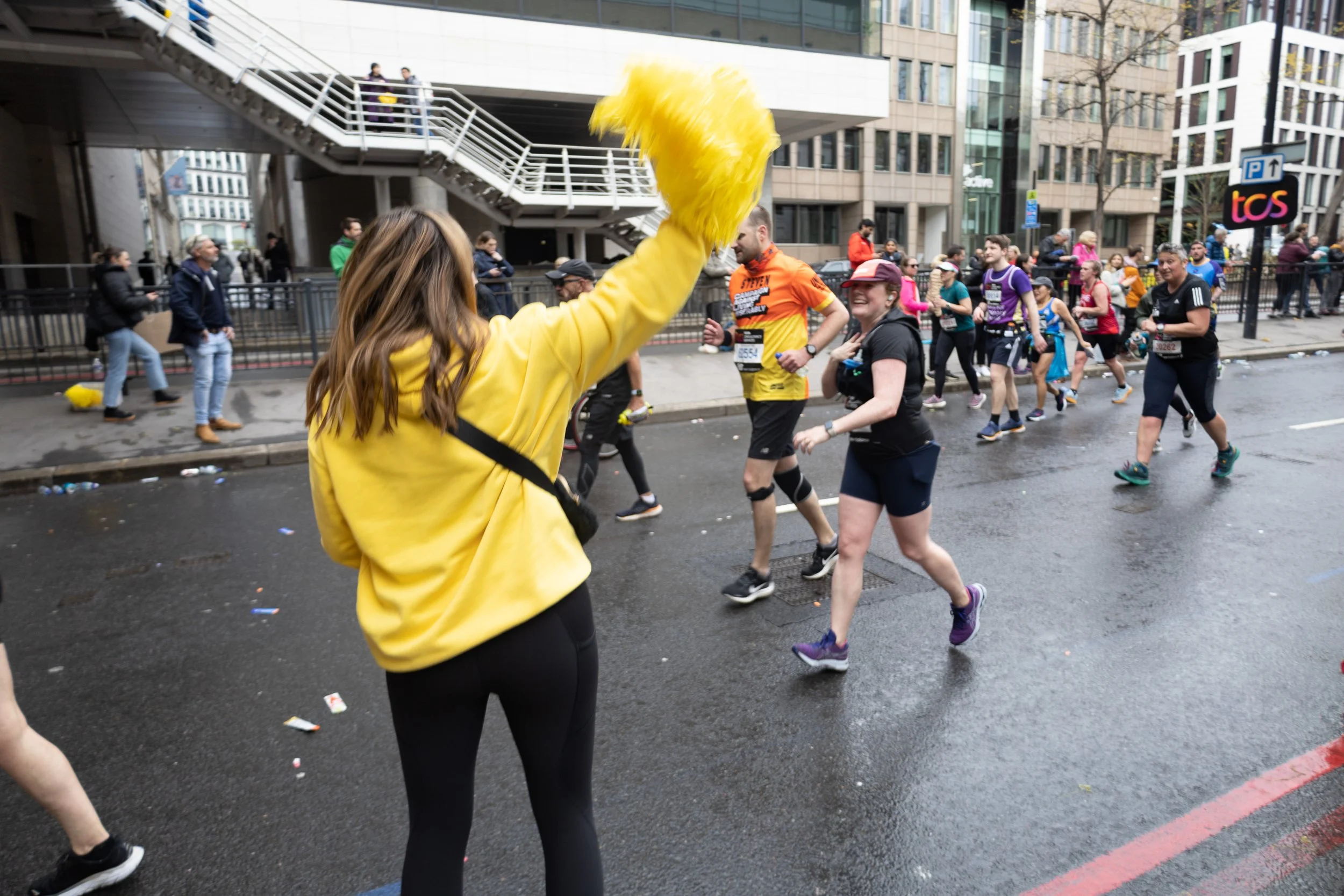Why Don't Women Run Ultra Marathons?
As always, my comments shouldn’t be taken as definitive - this is an area where we need to do more research (it would make a fantastic PhD or postdoc!) - but they are underpinned by academic research. You can find out more about my credentials as a researcher here.
This is a big one! What I’m going to share is very much an overview, there are lots of factors at play and they’re not always easy to unpick, but hopefully, this post will give you a sense of why fewer women run ultra-marathon than men.
A couple of days ago running coach Hannah Walsh shared a great Instagram post (above) highlighting that just 0.007% of people have run an ultramarathon, and of these 0.0001% are women. That’s a really small number.
Since the early ‘90s ultra running has experienced massive growth - Hannah quotes growth of around 345% in the last 10 years, while RunRepeat’s analysis of Global Running Participation suggests an increase of 1676% between 1997 and 2020. Various academics have tried to nail down the growth of the sport too (it’s tricky because there’s no central governing body) estimating that the number of races has tripled in the last 40 years, while writer Adharanand Finn suggests that there’s been a c.100% increase in participation globally since the mid-2000s. However you look at it, the growth has been massive and as Hannah highlights, although the proportion of women taking part in the sport is tiny, it’s still the biggest it’s ever been!
Something that’s interesting to note is that the longer the distance a race is, the smaller the percentage of women participating is. Hannah shared stats that suggest for 50 miles and under the proportion of women participating is up to 23% (although this could be higher in individual races, and there are races which actively work to 50:50 representation), while in longer races over 50 miles the proportion of women is up to 16%. In 2018 Robbie Britton analysed stats from UTMB races that year and found the following;
just 9.5% of marquee 170km race participants that year were women;
in the 101km CCC around 17% of participants were women;
in the 119km TDS 11.4% of participants were women;
in the 57km OCC women made up 23.1% of participants, mirroring the trend Hannah highlighted.
Update: After chatting with Robbie I thought it might be good to look at UTMB participation stats from recent years as his hunch was that the gap may have increased following COVID. Mathias Eichler has done an analysis of the stats from 2022 on his blog Electric Cable Car, it doesn’t go into detail on the stats for each race beyond the 170km marquee) although he does look at the proportions of American men and women for each race) but it’s still an interesting read, you can find it here.
Participants in UTMB 171km event 2018 to 2022 via Mathias Eichler.
Looking at these stats there was a little drop in the proportion of women participating in the 171km event in 2021, but overall the figures have been fairly consistent, with a small uplift in 2022.
This mirrors the trend that Hannah shared in her post, and while the stats suggest that the participation gap has narrowed, it’s still significant. So what’s holding women back?
Why don’t women run ultra marathons?
This is a huge question and I think it’s best addressed by going back to the start - why do fewer women than men participate in sport?
I’ve written a couple of posts about this which (I like to think!) are worth a read, but in short, a whole plethora of challenges can stand between a woman who wants to run and them being able to run, and often these challenges are underpinned by some pretty hefty social and economic issues too (you can find out more in this post). And that’s after you get past the initial barrier of thinking that sport just isn’t for them (this post explains the impact of gender ideology on women’s participation in sport).
Running has fewer issues regarding the gender participation gap, at least over shorter distances. RunRepeat has published global statistics looking at women’s participation in running. These stats are a little old (2019) and global, so again, direct comparisons are tricky, but they still provide a useful illustration. According to RunRepeat, total women’s participation has risen from under 20% in 1986 to just above 50% in 2018. So far, so positive, but when you look at the numbers broken down by distance, things look slightly different.
Trends in Women’s Running Participation by Distance via. RunRepeat.com
Based on the stats from RunRepeat, while overall participation has increased over time, there’s still a significant gap when it comes to the proportion of women participating in longer races. This echos the stats about ultra running specifically shared above.
What’s putting women off running longer distances?
A survey conducted by SheRACES in 2022 suggested that 70% of respondents had been put off entering a race at some point.
Respondents shared a whole host of reasons for being put off:
race specific issues like access to facilities or how accessible the race was overall (for example, could you get to a race using public transport?)
personal reasons such as family commitments, whether a race had a deferral policy for pregnancy plays a big role here and if women think they might fall pregnant they’re less likely to sign up for a race
not feeling like they have the skills to take part. For example, if you’re not confident reading a map then entering a long trail race where you’ll need to navigate might not be an attractive proposition. Of course, there are courses you can take, but if you’ve always believed that women can’t read maps due to cultural ideology and stereotypes then it’s hard to break old thoughts
marketing and atmosphere of the race. Respondents were put off when races failed to feature women in their marketing materials and/or used aggressive language about how tough the event was.
The last point is particularly interesting and seemed to resonate with people commenting on Hannah’s post. There were those who it resonated with, they’d been put off entering races because the promotional material only featured men, but there were also those who didn’t understand what the issue was and that if someone wanted to take part in an ultra why didn’t they just go for it? It’s a really good question, and something that has come up in my own research on the experiences of women in ultrarunning.
Why don’t women just go for it?
The idea that ‘anyone could run’ as long as they wanted to and that women should ‘just go for it’ is something that came through in my research, and it’s also something I’ve noticed in the conversations about women in ultra running happening more widely. As part of my PhD I’ve done a pretty extensive analysis of these themes from a feminist perspective. It gets pretty involved, but in short I suggest that this liberal notion of self-empowerment which has an emphasis on personal responsibility and self-improvement isn’t necessarily something that is available to all women and overlooks the complex interplay of social factors that affect women’s decisions.
“The belief in innate biological and psychological differences between the sexes constituted a powerful and pervasive form of sexism.”
Gender ideology is so pervasive that we don’t always realise we’re influenced by it, and it is so ingrained it can take generations of action to effect change, which means that ideas from the Victorian era about gender still have some influence today.
In Britain modern sport emerged in the Victorian era as a ‘symbol of masculinity and chauvinism…the ‘natural’ domain of men’ which women were, for the most part, excluded from as women who engaged in sport were considered unattractive, acting contrary to conventional ideas of femininity and risking their psychological and physical wellbeing (Hargreaves, 1994; Jeanes, Hills and Kay, 2016). No joke, there were very real concerns women’s uterus’ might fall out with too much exertion and ideas that women’s bodies couldn’t handle physiological stress continued to influence whether race organised allowed women to complete in endurance events up to the 1980s.
Because it is so physical in nature sport presents a unique opportunity to highlight the differences between men and women, valuing masculinity while undermining women who are perceived to transgress gender boundaries. As gender in society is so closely policed, some women may not be comfortable transgressing these boundaries to participate in sport as it may simply not be worth the repercussions.
Here are some of the things that women told SheRACES about why they have been put off entering races:
Too many men, I’m intimidated and feel pathetic
imagery of big men when I’m a tiny girl
Big ego vibe
Sexism - well meaning but sexist comments, intimidating comments/behaviour, sexist banter in race briefings, offensive marketing/jokes
It takes a lot to step out of the ‘norm’ and stepping into a field that is (often) male dominated can be intimidating because of the internalised idea that women are ‘outsiders’. Sometimes it just doesn’t feel like it’s worth the effort, especially if you’re worried about stepping into an intimidating environment.
Chatting to one of the women who commented on Hannah’s post that she’d been put off doing a race because all the pictures on Instagram were of men, she explained to me that while she knows ‘courses are marshalled and I’m sure everyone is lovely, the idea of running in quite isolated places with what looked like only men from the photos made me feel uncomfortable. That’s not really a rational thought, but more of an instincutal one? Like when I’m out running on my own and see men it makes me feel a bit nervous and very aware that I’m out there on my won? As I say, I’m sure these guys are great, but it’s instinctual in a way? Also just something about identifying with other people doing the race…or worrying that they’re all going to be 10 times quicker’.
This doesn’t always play out in reality, for the most part women who participated in my own research told me that the ultra running community is friendly and supportive, irrespective of gender, but even thinking these issues could be a possibility can prevent women from taking the risk to sign up.
How can we encourage more women to run ultra marathons?
SheRACES are doing great work talking about what races can do to get more women on start lines. None of their guidelines are especially complicated;
using inclusive imagery
think about the language used to describe races
generous cut-off times
sharing lots of information about race logistics and facilities
having an active social media presence so people can ask questions
fair deferral policies
active selection policies
ensuring appropriate toilet and changing facilities
ensuring women feel safe before, during and after events
t-shirts that fit
supporting breastfeeding runners
equal coverage, room to race and equal prizes
It’s not an exhaustive list, but its a starting point.
However, to really make a change we have to look beyond the start line and think about how we make running, and sport more widely, as inclusive as possible. Unfortunately there aren’t any quick fixes, but simple things like making sure we’re aware of the barriers to participation and thinking about what we can do to address them can make a difference. I’ve shared a few ideas around how we can break down barriers to grassroots running here.
This post has been a bit of a beast, it’s a tricky issue and there aren’t any easy answers, but it is something that we need to think about if we want a future where women can ‘just go for it’.











